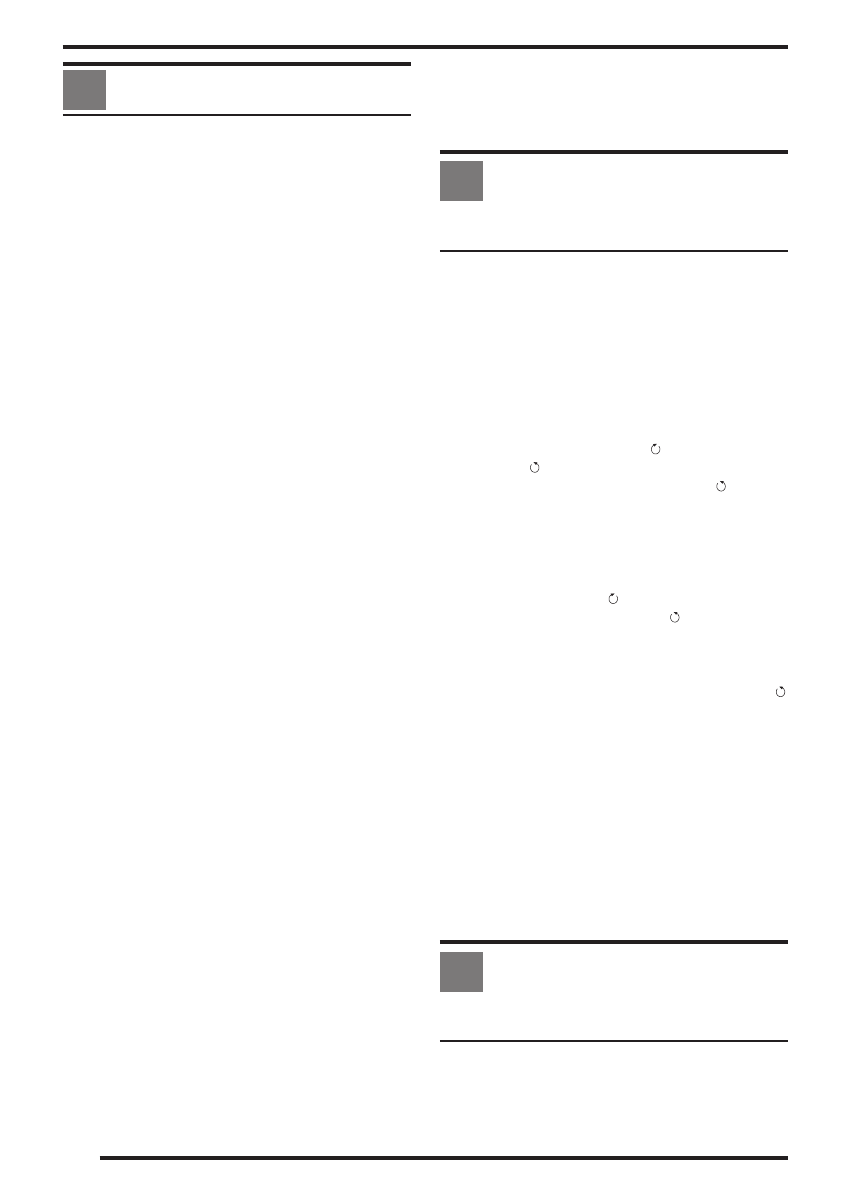
6
USAGE
IMPORTANT. Before using a chain saw read
carefully the Operator’s Manual and all safety
precautions carefully.
FELLING TREES.
- Make sure that there are no bystanders or
animals in the work area.
- Study the direction of the fall of the tree and
then plan your exit path away from the planned
direction of fall.
- Don’t fell trees when there is a strong wind.
1 Clear the tree base of interfering limbs and
brush. Clean the work area from stones or
other objects which could damage the chain.
If the tree has large protruding roots, remove
them before felling (see illustrations).
2A) Cut a felling notch (A) of 45°on the side
you want the tree to fall to a depth of about one
third of the trunk diameter (d).
Then make a felling cut (B) about 5 cm higher
than the felling notch on the opposite side of
the tree. Make sure that the felling cut does not
go right through the trunk. A hinge (C) must
always be left to provide control over the
direction of the fall.
B) Use wedges to control the moment and
direction of the fall.
3 When the tree starts to fall, walk away along
your preplanned escape path.
CUTTING FALLEN TRUNKS.
4A) Limbing thick branches. For limbing and
bucking leave the lower limbs to support
the log off the ground.
B) Supported at one end only. Begin with a
bottom cut made by the upper side of the bar
(A); the depth of the cut should be about one
third of the log diameter (A). Finish with a top
cut (B) meeting the first one. With this technique
splitting, cracking can be avoided.
C) Supported at both ends. Begin with a top
cut about one third of the log diameter. Then
finish with a bottom cut (B) meeting the first
one. This technique avoids the risk of pinching
the bar in the log.
D) If the log is supported along its whole
length it may be cut normally from above. Take
care not to touch the ground with the chain.
• When working on a slope always stand on the
uphill.
• When cutting prepared timber, use clamps or
chocks to secure work.
• Use extreme caution when cutting small size
brush and saplings which may catch the chain
and pull you off balance.
CARBURETTOR
ADJUSTMENT
N.B. We suggest carburetor adjustments are
made by an authorized service dealer.
The carburetor has three adjustment
possibilities:
• L: The needle screw (L) governs the fuel flow
at low speed and also the acceleration from
low to full speed.
To set screw (L): close screw (L) turning it
clockwise without forcing
. Then open screw
1 full turn
(counterclockwise).
If acceleration is not smooth, open
another
1/8 turn to increase fuel flow.
• H: The needle screw (H) governs fuel flow at
high speed (throttle valve fully open).
To set hi speed screw (H): close screw (H)
turning it clockwise
without forcing .
Then open screw 1-1/2 full
turn (counter-
clockwise) .
If the engine speed is too high (the maximum
speed with bar and chain on should not
exceed 11.500 min
-1
), open the screw
about 1/8 turn (counterclockwise).
• I: The (I IDLE) screw controls the throttle
opening to govern idle speed (2.500 min
-1
).
CAUTION: increased idle speed may cause
chain movement. The carburator is adjusted
for normal operation during production. Wen
considerable changes of altitude require a
supplementary adjustment, contact an
authorised service station which offers the
latest in tools, parts and technical assistance.
ROUTINE
MAINTENANCE
Ensure engine is always switched off before any
kind of maintenance operation.
G
F
H

















